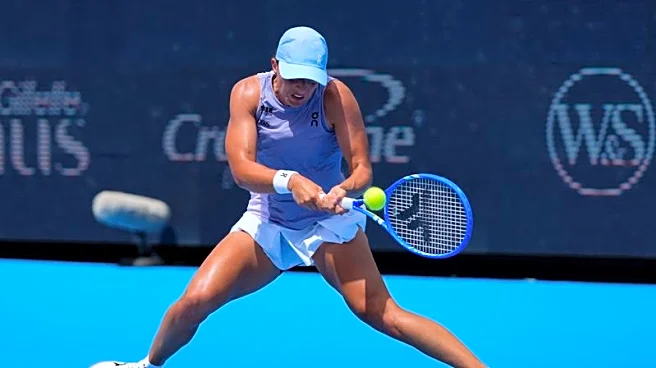What's Happening?
The Cincinnati Open men's final is set to take place on a Monday, a decision that has sparked controversy among players and fans. Tournament director Bob Moran clarified that the scheduling was not his choice but rather a decision made by the ATP and WTA tours. The change is part of a broader shift to a 12-day format for Masters 1000 events, aimed at providing players with more rest days. This format was first implemented in Toronto and Montreal, where finals were held on a Thursday night. Despite the pushback, the expansion aligns with similar changes at other major tournaments like the Italian Open and Madrid Open.
Why It's Important?
The scheduling change reflects a significant shift in the structure of major tennis tournaments, potentially impacting player performance and fan engagement. By extending the tournament duration, organizers aim to reduce player fatigue, which could lead to higher quality matches. However, the unusual timing of finals may affect attendance and viewership, as Monday finals are less convenient for fans. The decision also highlights the ongoing debate between tournament directors and governing bodies over the best way to balance player welfare with commercial interests.
What's Next?
As the new format continues to be implemented, stakeholders will likely assess its impact on player performance and fan engagement. Feedback from players and fans may influence future scheduling decisions, potentially leading to further adjustments. Tournament directors like Bob Moran may advocate for more traditional scheduling to maintain fan interest and attendance. The broader tennis community will watch closely to see if the extended format achieves its intended goals without compromising the sport's appeal.
Beyond the Headlines
The shift to a 12-day format raises questions about the balance between player welfare and commercial interests in professional sports. While longer tournaments may benefit players physically, they could also lead to logistical challenges and increased costs for organizers. Additionally, the change may influence how other sports manage their schedules, potentially setting a precedent for prioritizing athlete health over traditional event structures.












